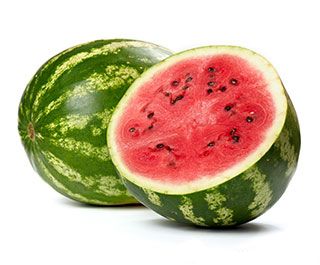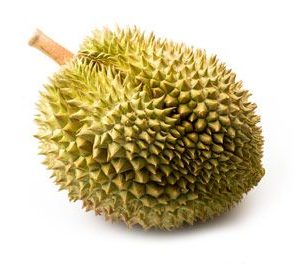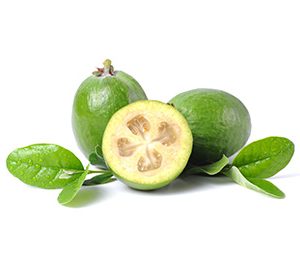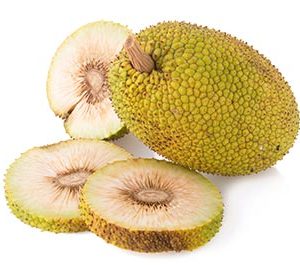Watermelons have reputed roots in Africa, with the first recorded harvest in Egypt around 5,000 years ago. From there, they sprouted throughout the Mediterranean region, eventually spreading to other parts of Europe, where they quickly became one of the most well-loved fruits.
Watermelons are a member of the Cucurbitaceae family, along with cucumber, squash and pumpkin. They can be oblong or round, weighing between 5 pounds and 50 pounds, with rinds that come in a range of yellow, orange and green hues depending on the variety. They can also be spotted or striped with white bands running from end to end.
Watermelons grow on long vines and rest on the ground as they mature, so they should be planted in an area with ample space to sprawl out. Each vine may produce two or three watermelons. Like other melons, they need to be pollinated to yield fruit — even the sterile, seedless watermelon.
Rather than being genetically modified (as some people fear), seedless watermelons are actually sterile hybrids created by crossing male pollen — containing 22 chromosomes per cell (making it a tetraploid plant) — with a female watermelon flower having 44 chromosomes per cell. When this seeded fruit matures, the small, white seeds contain 33 chromosomes (a triploid seed), rendering it sterile and incapable of producing seeds.
The time it takes for watermelons to mature differs according to variety — long-season watermelons mature within 80 to 90 days, whereas short-season watermelons can mature in 70 days. Watermelons store well at room temperature, but should be refrigerated after cutting.
Health Benefits of Watermelon
One of the notable characteristics of watermelons is their high antioxidant, flavonoid and lycopene content. They’re also a good source of vitamin C, which may help your immune system produce antibodies to fight disease, and vitamin A, which may help boost eye health and lower the risk for eye diseases, such as macular degeneration and cataracts. Potassium, although found in relatively small amounts in watermelon, may help balance fluids in your cells. Low potassium levels sometimes cause muscle cramps.
One of the natural chemicals in watermelons is citrulline, which converts in the kidneys to arginine, an amino acid that plays a role in maintaining good heart health and immune function. The more this conversion takes place, the less fat is likely to accumulate in the cells, helping reduce the risk of obesity and Type 2 diabetes. Arginine may also help remove ammonia and other toxicities from your body.
Lycopene is the star antioxidant in watermelons. It contributes to watermelon’s reddish color and is actually more abundant in this fruit than it is in tomatoes. Research shows lycopene may help protect and nourish the heart, prostate and eyes.
Lycopene may also help reduce the risk for inflammation, promote strong bones and neutralize harmful free radicals. ;Research indicates that lycopene has greater potency when the watermelon is ripe. In fact, while it’s still white inside, well before maturity, its vitamin and mineral content is close to zero.
Another anti-inflammatory phytonutrient in watermelons is cucurbitacin E, a triterpenoid that blocks the activity of pain-, fever- and inflammation-causing enzyme cyclooxygenase. Cucurbitacin E also neutralizes nitrogen-containing molecules in the body.
While some people believe that watermelon’s nutrients are concentrated in the darker red center, they’re actually very similar throughout the entire fruit. In fact, the white rind, which isn’t normally eaten, has the highest nutrient concentration of citrulline. Remember to consume watermelon in moderation because it contains fructose, which can be harmful to your health in excessive amounts. To learn more about the nutritional values of this fruit, check out the nutrition facts table below:
Watermelon Nutrition FactsServing Size: 3.5 ounces (100 grams), raw |
||
| Amt. Per Serving |
% Daily Value* |
|
| Calories | 30 | |
| Total Fat | 0.15 g | |
| Saturated Fat | 0.16 g | |
| Trans Fat | ||
| Cholesterol | 0 mg | |
| Sodium | 1 mg | |
| Total Carbohydrates | 7.55 g | |
| Dietary Fiber | 0.4 g | |
| Sugar | 6.20 g | |
| Protein | 0.61 g | |
| Vitamin A28 µg | Vitamin C | 8.1 mg |
| Calcium7 mg | Iron | 0.24 mg |
Studies Done on Watermelon
Research found that watermelon contains compounds that deliver beneficial effects to the body’s blood vessels and may even help increase libido. Phytonutrients with the ability to relax blood vessels (and maybe even reduce erectile dysfunction) include lycopene, beta-carotene and the more unfamiliar citrulline, which converts to arginine. Ingesting this nutrient may strengthen the heart and circulation system. It may also be useful in the treatment of angina, high blood pressure and other cardiovascular ailments.
Four men and five postmenopausal women ages 51 to 57 with elevated blood pressure levels — but otherwise healthy — received therapeutic doses of watermelon to determine its effectiveness against early-stage high blood pressure. Scientists found improved arterial function and lowered aortic blood pressure in all nine participants.
Results also show that, in addition to the vascular benefits, eating watermelon may help reduce serum glucose levels and inhibit slightly elevated high blood pressure levels from progressing to full-blown high blood pressure, a major risk factor for heart attacks and strokes. Because of the encouraging evidence generated by the study, continued research with a much larger group of participants was determined to be warranted.
Watermelon Fun Facts
The National Watermelon Promotion Board reports various interesting watermelon facts, such as the world’s heaviest watermelon, grown in Sevierville, Tennessee in 2013 and weighing in at 350.5 pounds. If you’re growing your own watermelon, here’s a tip: A pale or buttery yellow spot on the bottom of a watermelon indicates ripeness.
Summary
With its first vines running through Africa, watermelons continued sprouting throughout the Mediterranean region and eventually to other parts of Europe. This gigantic and lusciously sweet fruit is a member of the Cucurbitaceae family. Like other melons, it requires pollination to produce a fruit.
While its vitamin A and C content is significant, it’s the lycopene that takes the prize for the major benefits watermelon has for the body, which includes helping fight inflammation, promoting bone health and neutralizing harmful free radicals.
One of watermelon’s most important phytochemicals is citrulline, which converts to arginine to help benefit your heart and immune system health. Arginine may also help reduce the risk for obesity and Type 2 diabetes, and remove ammonia and other toxicities from the body. Luckily, this is one fruit you’ll have no trouble getting anyone to try, as it’s a favorite among kids and adults alike.







Reviews
There are no reviews yet.